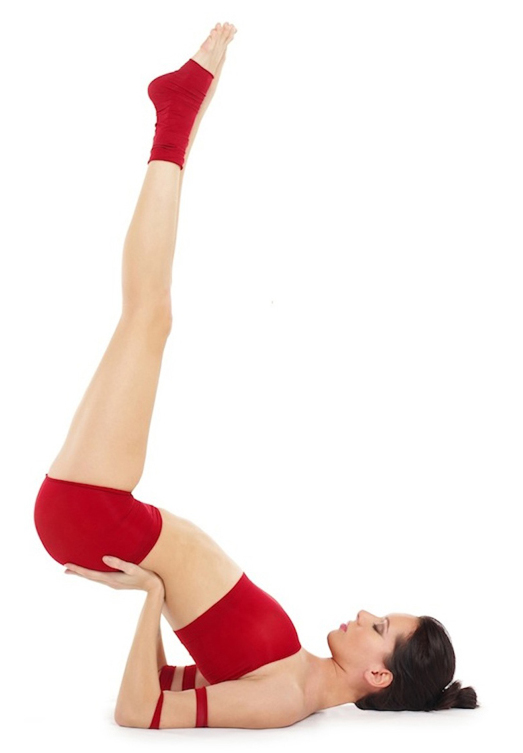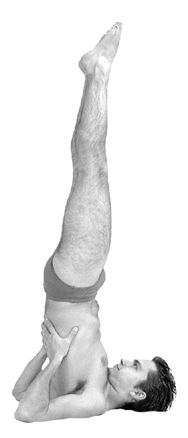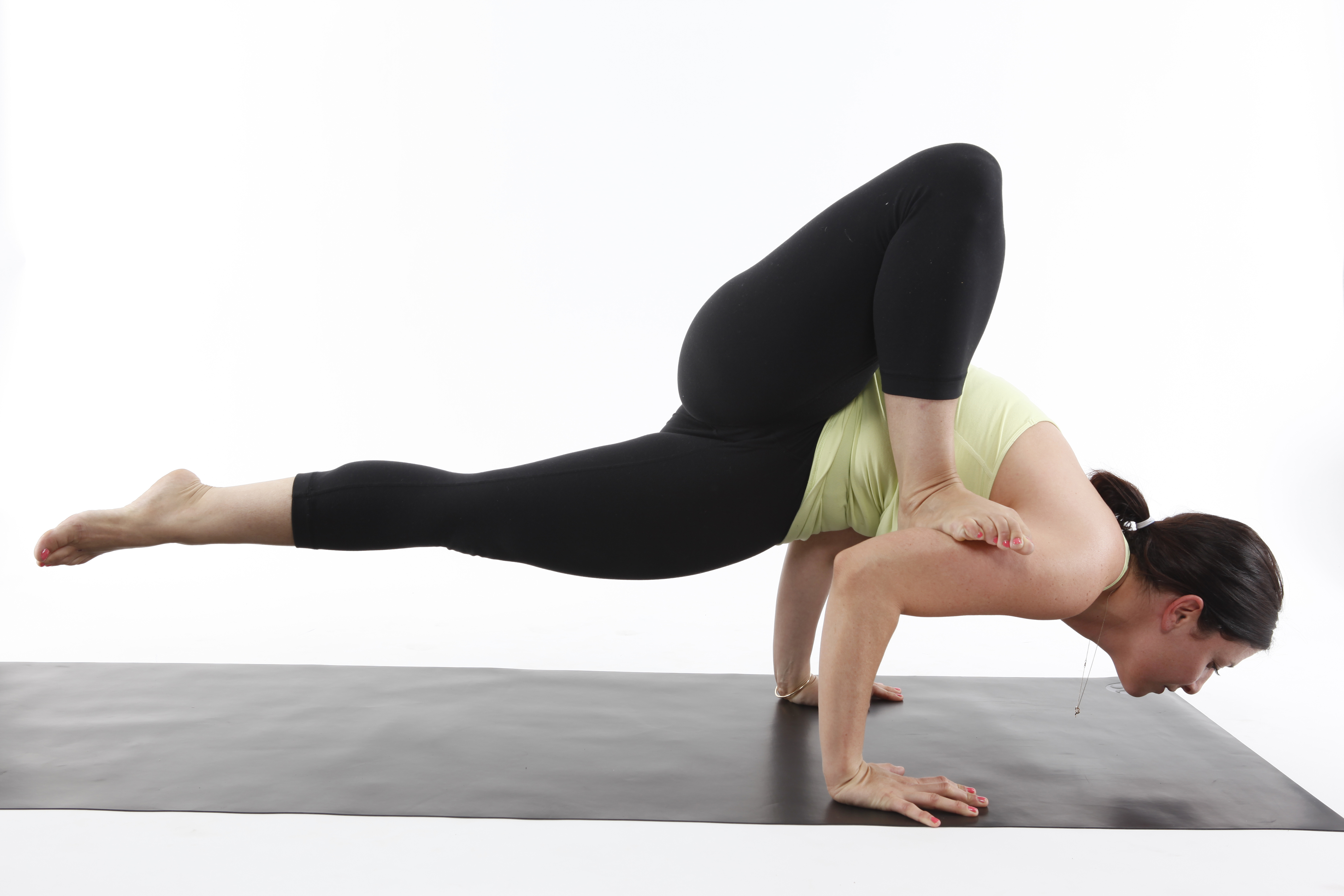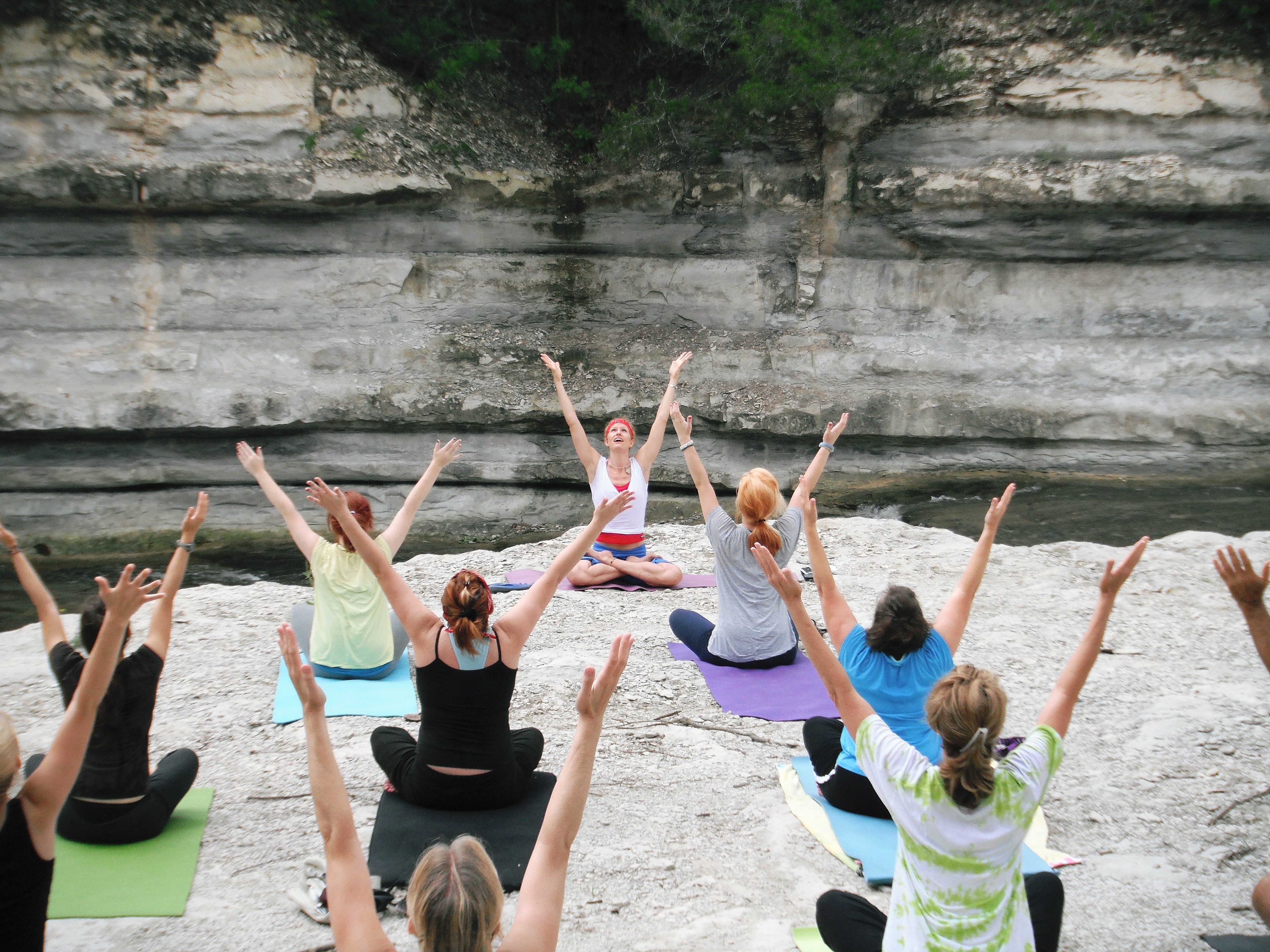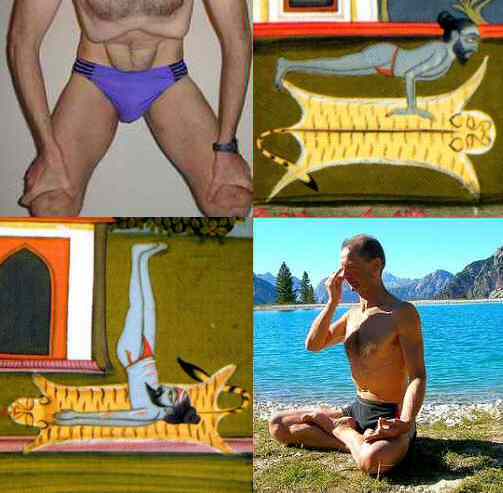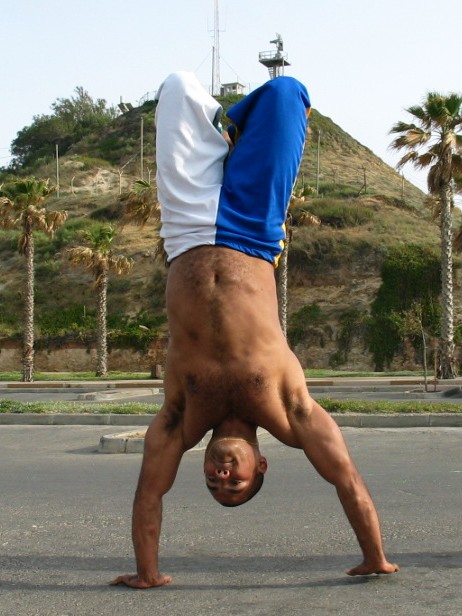|
Viparita Karani
Viparita Karani ( sa, विपरीतकरणी; ) or legs up the wall pose is both an asana and a mudra in hatha yoga. In modern yoga as exercise, it is commonly a fully supported pose using a wall and sometimes a pile of blankets, where it is considered a restful practice. As a mudra it was practised using any preferred inversion, such as a headstand or shoulderstand. The purpose of the mudra was to reverse the downward flow of vital fluid being lost from the head, using gravity. Etymology and origins The name comes from the Sanskrit words विपरीत ''viparīta'', "inverted" or "reversed", and करणी ''karaṇī'', "a particular type of practice". The practice is described in the 13th century ''Vivekamārtaṇḍa'' (verses 103-131) as a means of yogic withdrawal, pratyahara. The pose was practised from the 17th century onwards in hatha yoga under names such as Narakasana, Kapalasana and Viparitakaranasana; its purpose as a mudra was to reverse the do ... [...More Info...] [...Related Items...] OR: [Wikipedia] [Google] [Baidu] |
Sarvangasana
Sarvangasana ( sa, सर्वाङ्गासन, translit=sarvāṅgāsana), Shoulder stand, or more fully Salamba Sarvangasana (Supported Shoulder stand), is an inverted asana in modern yoga as exercise; similar poses were used in medieval hatha yoga as a mudra. Many named variations exist, including with legs in lotus position and Supta Konasana with legs wide apart, toes on the ground. ''Sarvāṅgāsana'' has been nicknamed the "queen" or "mother" of all the asanas. Etymology and origins The name comes from the Sanskrit सालम्ब ''Salamba'', "supported", सर्वाङ्ग ''Sarvāṅga'', "all limbs", i.e. "the whole body", and आसन ''Āsana'', "posture"," position", or "seat". The name Sarvangasana is modern, but similar inverted poses were in use in medieval hatha yoga as a mudra, Viparita Karani, which is documented in the 14th century '' Śiva Saṃhitā'' 4.45-47, the 15th century ''Haṭha Yoga Pradīpikā'' 3.78-81, the 17th century ' ... [...More Info...] [...Related Items...] OR: [Wikipedia] [Google] [Baidu] |
Pregnancy
Pregnancy is the time during which one or more offspring develops ( gestates) inside a woman's uterus (womb). A multiple pregnancy involves more than one offspring, such as with twins. Pregnancy usually occurs by sexual intercourse, but can also occur through assisted reproductive technology procedures. A pregnancy may end in a live birth, a miscarriage, an induced abortion, or a stillbirth. Childbirth typically occurs around 40 weeks from the start of the last menstrual period (LMP), a span known as the gestational age. This is just over nine months. Counting by fertilization age, the length is about 38 weeks. Pregnancy is "the presence of an implanted human embryo or fetus in the uterus"; implantation occurs on average 8–9 days after fertilization. An '' embryo'' is the term for the developing offspring during the first seven weeks following implantation (i.e. ten weeks' gestational age), after which the term ''fetus'' is used until birth. Signs an ... [...More Info...] [...Related Items...] OR: [Wikipedia] [Google] [Baidu] |
Yoga Journal
''Yoga Journal'' is a website and digital journal, formerly a print magazine, on yoga as exercise founded in California in 1975 with the goal of combining the essence of traditional yoga with scientific understanding. It has produced live events and materials such as DVDs on yoga and related subjects. The magazine grew from the California Yoga Teachers Association's newsletter, which was called ''The Word''. ''Yoga Journal'' has repeatedly won Western Publications Association's Maggie Awards for "Best Health and Fitness Magazine". It has however been criticized for representing yoga as being intended for affluent white women; in 2019 it attempted to remedy this by choosing a wider variety of yoga models. Beginnings ''Yoga Journal'' was started in May 1975 by the California Yoga Teachers Association (CYTA), with Rama Jyoti Vernon as President, William Staniger as the founding editor, and Judith Lasater on the board and serving as copy editor. Their goal was to combine "the ess ... [...More Info...] [...Related Items...] OR: [Wikipedia] [Google] [Baidu] |
Cervical Spine
In tetrapods, cervical vertebrae (singular: vertebra) are the vertebrae of the neck, immediately below the skull. Truncal vertebrae (divided into thoracic and lumbar vertebrae in mammals) lie caudal (toward the tail) of cervical vertebrae. In sauropsid species, the cervical vertebrae bear cervical ribs. In lizards and saurischian dinosaurs, the cervical ribs are large; in birds, they are small and completely fused to the vertebrae. The vertebral transverse processes of mammals are homologous to the cervical ribs of other amniotes. Most mammals have seven cervical vertebrae, with the only three known exceptions being the manatee with six, the two-toed sloth with five or six, and the three-toed sloth with nine. In humans, cervical vertebrae are the smallest of the true vertebrae and can be readily distinguished from those of the thoracic or lumbar regions by the presence of a foramen (hole) in each transverse process, through which the vertebral artery, vertebral veins, and inferio ... [...More Info...] [...Related Items...] OR: [Wikipedia] [Google] [Baidu] |
Thoracic Spine
In vertebrates, thoracic vertebrae compose the middle segment of the vertebral column, between the cervical vertebrae and the lumbar vertebrae. In humans, there are twelve thoracic vertebrae and they are intermediate in size between the cervical and lumbar vertebrae; they increase in size going towards the lumbar vertebrae, with the lower ones being much larger than the upper. They are distinguished by the presence of facets on the sides of the bodies for articulation with the heads of the ribs, as well as facets on the transverse processes of all, except the eleventh and twelfth, for articulation with the tubercles of the ribs. By convention, the human thoracic vertebrae are numbered T1–T12, with the first one (T1) located closest to the skull and the others going down the spine toward the lumbar region. General characteristics These are the general characteristics of the second through eighth thoracic vertebrae. The first and ninth through twelfth vertebrae contain certai ... [...More Info...] [...Related Items...] OR: [Wikipedia] [Google] [Baidu] |
Extension (anatomy)
Motion, the process of movement, is described using specific anatomical terms. Motion includes movement of organs, joints, limbs, and specific sections of the body. The terminology used describes this motion according to its direction relative to the anatomical position of the body parts involved. Anatomists and others use a unified set of terms to describe most of the movements, although other, more specialized terms are necessary for describing unique movements such as those of the hands, feet, and eyes. In general, motion is classified according to the anatomical plane it occurs in. ''Flexion'' and ''extension'' are examples of ''angular'' motions, in which two axes of a joint are brought closer together or moved further apart. ''Rotational'' motion may occur at other joints, for example the shoulder, and are described as ''internal'' or ''external''. Other terms, such as ''elevation'' and ''depression'', describe movement above or below the horizontal plane. Many anatomic ... [...More Info...] [...Related Items...] OR: [Wikipedia] [Google] [Baidu] |
Salamba Sarvāngāsana
Sarvangasana ( sa, सर्वाङ्गासन, translit=sarvāṅgāsana), Shoulder stand, or more fully Salamba Sarvangasana (Supported Shoulder stand), is an inverted asana in modern yoga as exercise; similar poses were used in medieval hatha yoga as a mudra. Many named variations exist, including with legs in lotus position and Supta Konasana with legs wide apart, toes on the ground. ''Sarvāṅgāsana'' has been nicknamed the "queen" or "mother" of all the asanas. Etymology and origins The name comes from the Sanskrit सालम्ब ''Salamba'', "supported", सर्वाङ्ग ''Sarvāṅga'', "all limbs", i.e. "the whole body", and आसन ''Āsana'', "posture"," position", or "seat". The name Sarvangasana is modern, but similar inverted poses were in use in medieval hatha yoga as a mudra, Viparita Karani, which is documented in the 14th century '' Śiva Saṃhitā'' 4.45-47, the 15th century ''Haṭha Yoga Pradīpikā'' 3.78-81, the 17th century ... [...More Info...] [...Related Items...] OR: [Wikipedia] [Google] [Baidu] |
Yoga As Exercise
Yoga as exercise is a physical activity consisting mainly of postures, often connected by flowing sequences, sometimes accompanied by breathing exercises, and frequently ending with relaxation lying down or meditation. Yoga in this form has become familiar across the world, especially in America and Europe. It is derived from medieval Haṭha yoga, which made use of similar postures, but it is generally simply called "yoga". Academics have given yoga as exercise a variety of names, including modern postural yoga and transnational anglophone yoga. Posture is described in the ''Yoga Sutras'' II.29 as the third of the eight limbs, the ashtanga, of yoga. Sutra II.46 defines it as that which is ''steady and comfortable'', but no further elaboration or list of postures is given. Postures were not central in any of the older traditions of yoga; posture practice was revived in the 1920s by yoga gurus including Yogendra and Kuvalayananda, who emphasised its health benefits. The ... [...More Info...] [...Related Items...] OR: [Wikipedia] [Google] [Baidu] |
Haṭha Yoga
Haṭha yoga is a branch of yoga which uses physical techniques to try to preserve and channel the vital force or energy. The Sanskrit word हठ ''haṭha'' literally means "force", alluding to a system of physical techniques. Some haṭha yoga style techniques can be traced back at least to the 1st-century CE, in texts such as the Hindu Sanskrit epics and Buddhism's Pali canon. The oldest dated text so far found to describe haṭha yoga, the 11th-century ''Amṛtasiddhi'', comes from a tantric Buddhist milieu. The oldest texts to use the terminology of ''hatha'' are also Vajrayana Buddhist. Hindu hatha yoga texts appear from the 11th century onwards. Some of the early haṭha yoga texts (11th-13th c.) describe methods to raise and conserve bindu (vital force, that is, semen, and in women ''rajas –'' menstrual fluid). This was seen as the physical essence of life that was constantly dripping down from the head and being lost. Two early Haṭha yoga techniques sought to e ... [...More Info...] [...Related Items...] OR: [Wikipedia] [Google] [Baidu] |
Adho Mukha Vrksasana
__NOTOC__ A handstand is the act of supporting the body in a stable, inverted vertical position by balancing on the hands. In a basic handstand, the body is held straight with arms and legs fully extended, with hands spaced approximately shoulder-width apart and the legs together. There are many variations of handstands, all of which require the performer to possess adequate balance and upper body strength. Kinematics Handstands use the wrist flexor muscles as well as the anterior deltoid The deltoid muscle is the muscle forming the rounded contour of the human shoulder. It is also known as the 'common shoulder muscle', particularly in other animals such as the domestic cat. Anatomically, the deltoid muscle appears to be made up ..., pectoralis major, latissimus dorsi, biceps brachii, and trapezius descendens. It is considered demanding in terms of both the muscle and joint requirement. According to a 2017 study most handbalancers use wrist movement to maintain balance in a ... [...More Info...] [...Related Items...] OR: [Wikipedia] [Google] [Baidu] |
